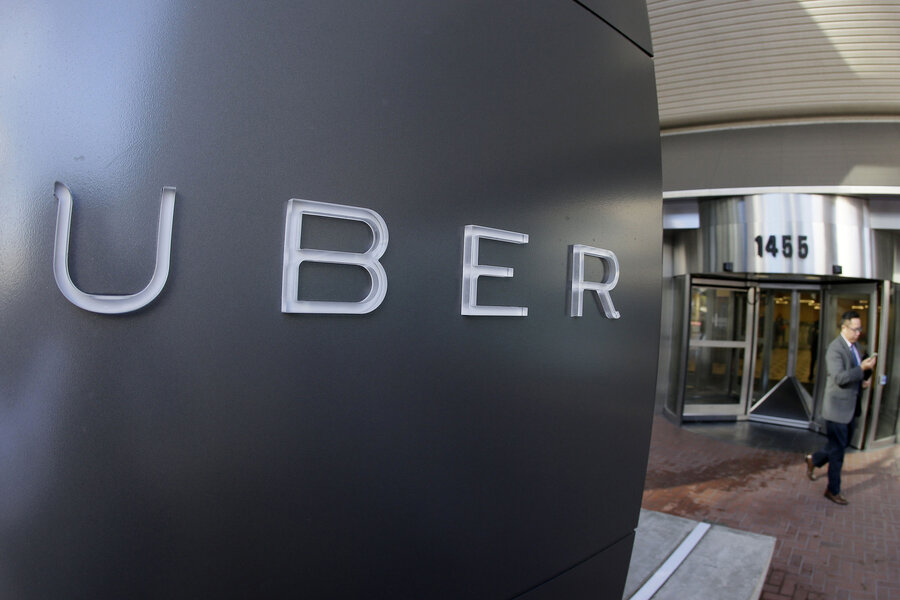'Uber' of healthcare lets you dial a doctor. Are house calls back?
Loading...
The $1 flu shot is a pretty good deal, especially when the nurse makes house calls.
That's exactly what on-demand car service Uber offered two weeks ago, allowing app users to order up 10 flu vaccinations for the price of one $10 health kit in more than three dozen cities on November 19.
But the "Uberication" of healthcare promises to be far more than a one-day curiosity, as on-demand medical services expand from concierge-style, über-personalized care beyond most Americans' wallet power to increasingly affordable appointments that can sometimes be covered by insurance plans.
In May, Pager began offering on-demand house calls in San Francisco and New York: $50 for a first-time visits with one of the company's board-certified doctors, then $200 for each subsequent health check, which includes all costs except lab testing and x-rays. All charges are presented up-front, and Pager, as well as competitors like Heal, tout that transparency as a major plus compared to insurance paperwork and its frequent surprises. Users pay out of pocket, but the company will submit their claims to insurance companies.
The next stage of Pager's growth is in business deals, often with similarly-minded startups like Spotify, Birchbox, and 13 other tech companies, as Mashable reports. At Manhattan-based Birchbox, for example, employees pay just $25 for a visit in their own office, for issues that run the gamut from rashes and colds to physical exams and STI testing.
Pager CEO Gaspard de Druezy says insurance company partnerships are the next step, which would help bring the out-of-pocket costs of Pager doctors' services even lower. The company also plans to expand to D.C., Chicago, and Miami in the coming months.
But just as Uber itself and similarly seamless, instantly-available startups like Airbnb have roiled debates about gentrification, safety, and labor standards, mobile healthcare has divided doctors and experts about whether it's the future of cheaper, more readily available medicine, or a trend that will leave Americans behind many other industrialized country in quality of care.
"We’re bringing back old-school techniques with new-school technology," Dr. Renee Dua, a founder of Heal, told The New York Times. Key among those old-school techniques are home or office visits, where doctors not facing the high-volume pressure of insurance billing can actually spend the time to talk to patients, and, in the case of a home visit, notice things they might miss in a 15-minute office consultation.
Those are factors that help their patients steer clear of more preventable health problems, often lifestyle-related issues such as diabetes or heart troubles, which can help keep down long-term costs for patients. Perhaps national healthcare costs, too: The paradox of the United States' relatively high spending, but poor health, has been blamed on a lack of preventable care tied to low insurance rates.
And today, those personalized services are available at affordable prices like Pager's, transforming the image of on-demand healthcare, once dominated by images of celebrity and millionaire doctors charging as much as $30,000 per month.
And investors seem to believe that the Affordable Care Act, which will add millions of Americans to health insurance rolls, will power a surge in primary physicians, a current gap that on-demand doctors might help fill. According to a November report from Rock Health, on-demand healthcare has raised $692 million in funding since 2011.
But other doctors worry that increasing popularity of such services with not just patients, but healthcare workers themselves, could create yet more scarcity in traditional clinics and hospitals. The pull of less paperwork, and more time with patients, is alluring.
"This is all doctors want to talk about," industry analyst Jeff Goldsmith told Bloomberg in 2012. "'I want to go off the grid. I’m done billing Blue Cross. I can’t deal with this anymore. It’s destroying my life and my relationship with my patients.'"
For now, those departures put increased pressure on traditional offices to offer high-level care with fewer staff. Kathleen Stoll, deputy executive director of healthcare advocavy group Families USA, told Bloomberg it represents "a step towards a two-tiered health-care system: a system where the rich get first-choice care and the not-so-rich get second-choice care."
As on-demand increases in popularity, its service costs may go down even further, lowering worries about access for poor and middle-class patients. But that doesn't mean that quality will necessarily go up, as well. Pager and its peers aren't equipped to deal with severe injuries or operations, for example, and while home visits give doctors a glimpse into the patient's lifestyle, so does interacting with the same trusted healthcare provider, year after year.
"These apps are not replacements for traditional doctor appointments," The New York Times' Jennifer Jolly weighed in after giving Heal a try. "But for ailments and symptoms that aren’t life-threatening, this next generation of health apps can save time and energy — which is a pretty big deal when you are not feeling up to waiting in a doctor’s office."








